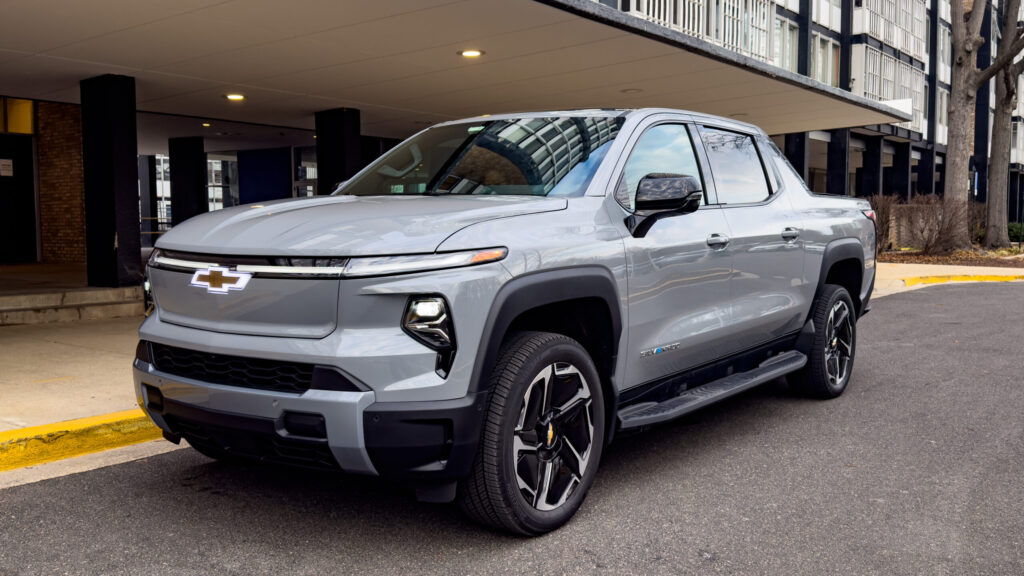At lower speeds, I found the Silverado EV a little more cumbersome. As noted, it’s a very long vehicle, and you need the more expensive RST version if you want rear-wheel steering, which turns the opposite direction to the front wheels at low speeds, in effect shrinking the 145.7-inch (3,700 mm) wheelbase. You would be much happier driving one of these straight into a garage rather than backing it into a parking space.
Having a garage isn’t a must, but in my opinion, being able to charge at home (or reliably at work) still remains a precondition for buying a plug-in vehicle. 120 V (level 1) AC charging might work for routine overnight top-ups if your daily driving is 40 miles or less, but it may take more than a day to completely restore a totally empty pack.
Did this truck miss its moment in time?
Credit:
Jonathan Gitlin
Level 2 AC charging should take 8–10 hours for a full charge (Chevy says 10 miles (16 km) in 10 minutes). Although the powertrain operates at 400 V, the pack can rejigger itself at suitable DC fast chargers to accept an 800 V charge at up to 300 kW. Expect a 10–80 percent charge to take around 45 minutes; during my week testing the Silverado EV, I only ran the battery down to around 50 percent, so I wouldn’t have seen optimal rates had I plugged it in. With climate change now causing wide temperature swings in early March, I can report that I averaged 1.7 miles/kWh (36.6 kWh/100 km) in cold weather, but once things got mild, that jumped to 2.2 miles/kWh (28.2 kWh/100 km).
Was Chevrolet misguided in making the Silverado EV? It certainly made more sense when EV optimism was peaking and the marketing departments in Detroit thought that pickup buyers would be easy conquests for a brave new future powered by electrons. That turned out to be the opposite of true, at least for the time being. But the automaker has a decent selection of EVs in other shapes, sizes, and price points, and an advantage to its common battery platform should be a degree of flexibility in which cars it decides to put them in.


